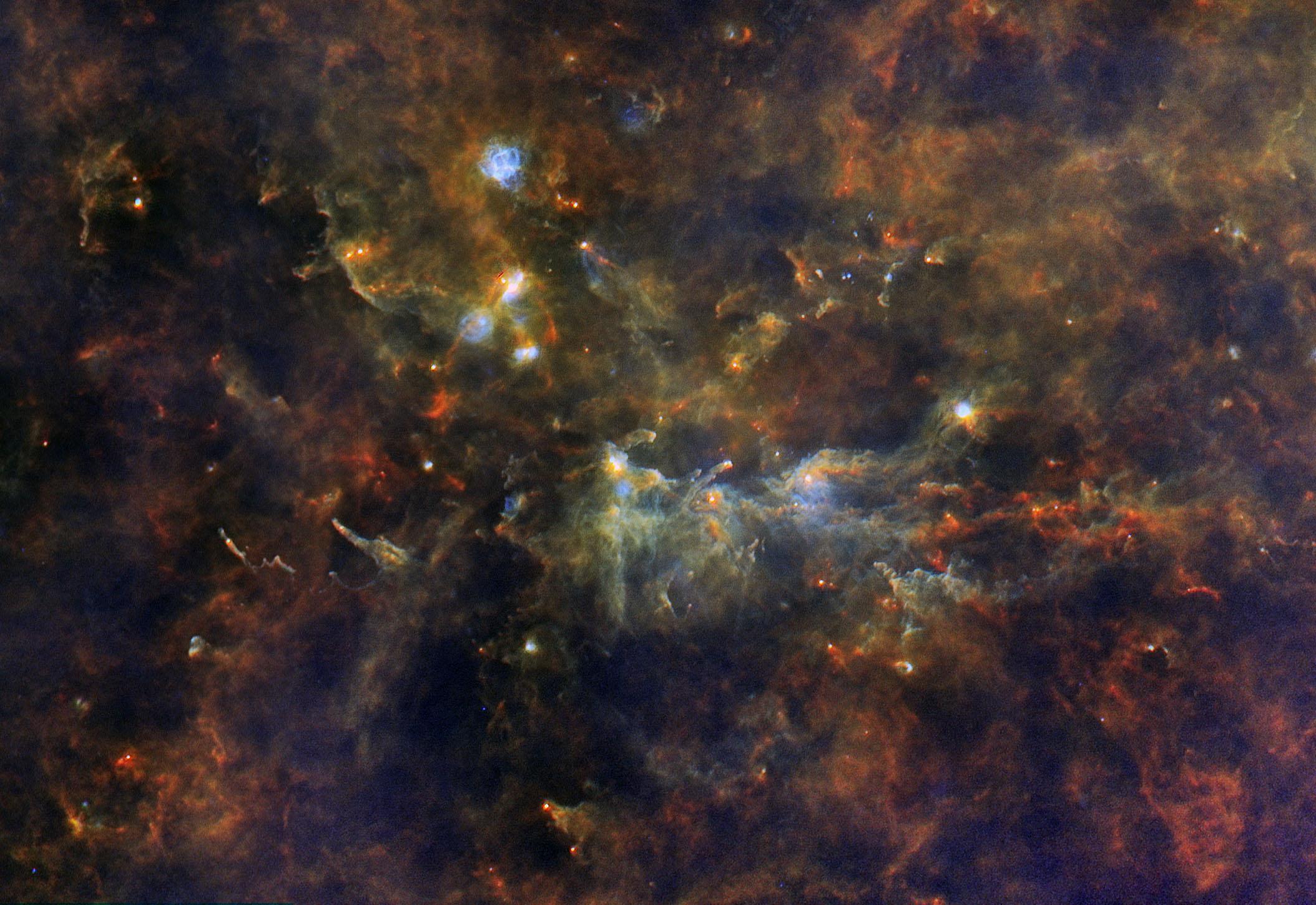Future Fireworks [1]
Monster stars are being born in this massive cloud of gas and dust. Known as the Vulpecula OB1 association, it's about 8,000 light-years away, in the faint constellation Vulpecula, the fox. The association is named for its large population of class O and B stars, which are the largest, hottest, and brightest stars in the galaxy. Despite their brilliance, the stars are still enveloped by gas and dust, so we can't see them with our eyes alone. This view was obtained by a space telescope that is sensitive to infrared wavelengths, which reveal otherwise hidden details in the complex. Over time, the cloud of gas and dust will either collapse to form more stars or it’ll be blown away, exposing the stars to view. Many of the stars will explode as supernovas. They’ll leave behind tiny, dense corpses -- neutron stars or black holes. In fact, some stars in Vulpecula already have. [ESA/Herschel/PACS, SPIRE/Hi-GAL Project]
